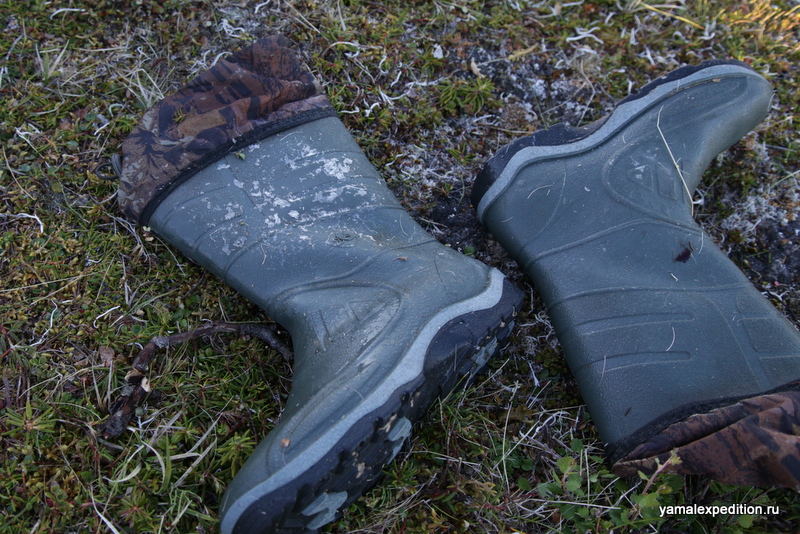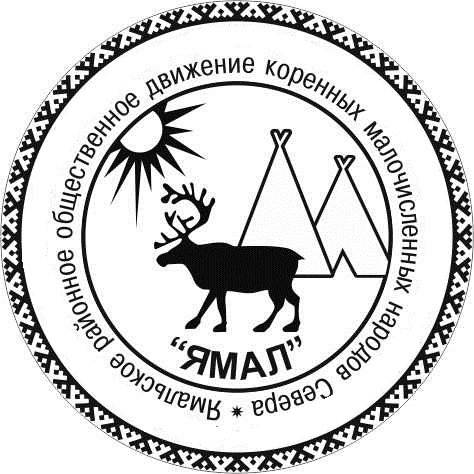On June 25th after our trip to the Kara Sea and Bovanenkovo we returned to our tundra family. While we were away people and herd moved two times, and we met again on the 24th encampment (calculated from the start of our trip), about 11 km away from Mordy-Yaha river's crossing point: N 70º02'09,0'' E 068º36'11,0''. Linear distance from the 22th stop - about 9,5 km.
Exactly this time we realized in full scale what is what Nenets call неняӈг иры (Nenyang Iry. "mosquito month"). Reindeers' behavior is different now - suffering from bloodsuckers, the aminals trying to huddle together in one herd, and usually stay not far away from chums. During this period men are keeping the watch not in pairs as usual, but alone and on foot.
The herd during mosquito month:
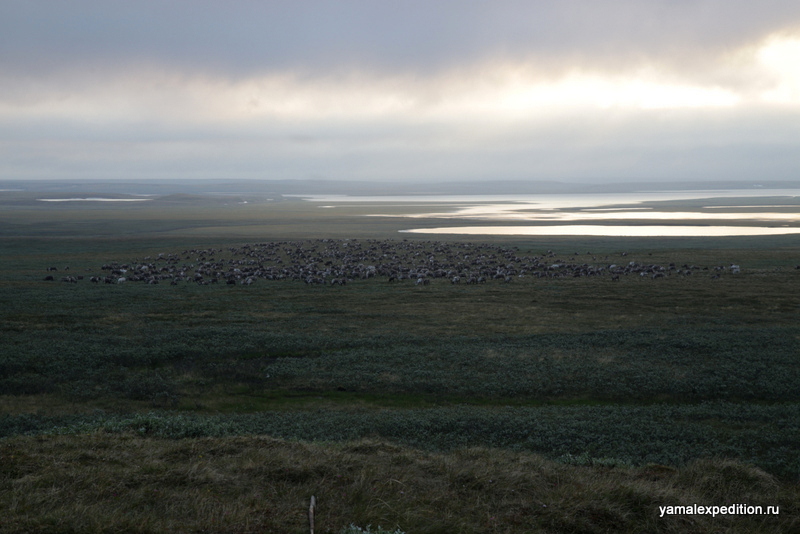
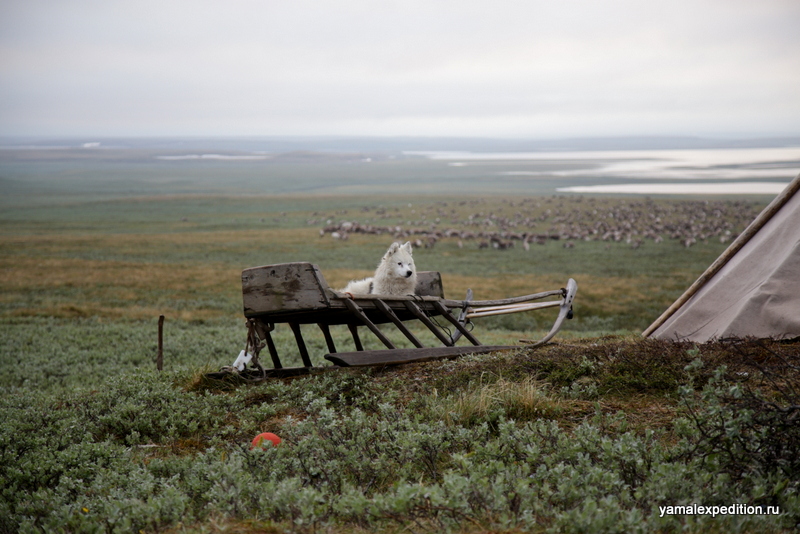
(please pree "Читать полностью")
Savoli Podovitch has made a new narta, it was left till the autumn:

Hasavako is peeling potatoes for the first time in his life:

On June 27th we moved to our 25th stop: N 70º03'54,7'' E 068º31'01,4''. Linear distance: 4,6 km. At one stage we again had to closs the river. After crossing the Mordy-Yaha river this one - Pyhyn-Syo - seemed very easy: it was quite narrow (only 10 meters). The reindeer herders used the easiest way to transport animals and nartas: they fixed a rope to the first reindeer in an argish, then transported the rope to other bank, and pulled the argish from there.
Olja and Semyon with a nest:
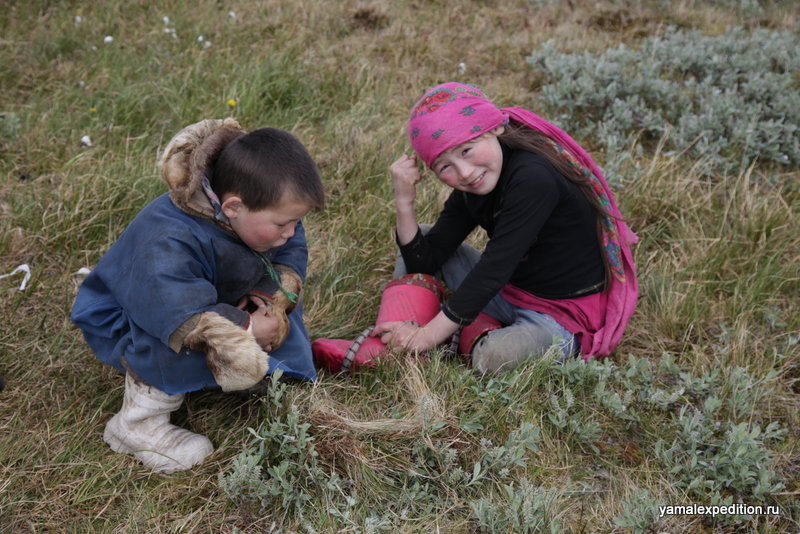
Yaroslav and Maya's daughters Nadya and Masha:
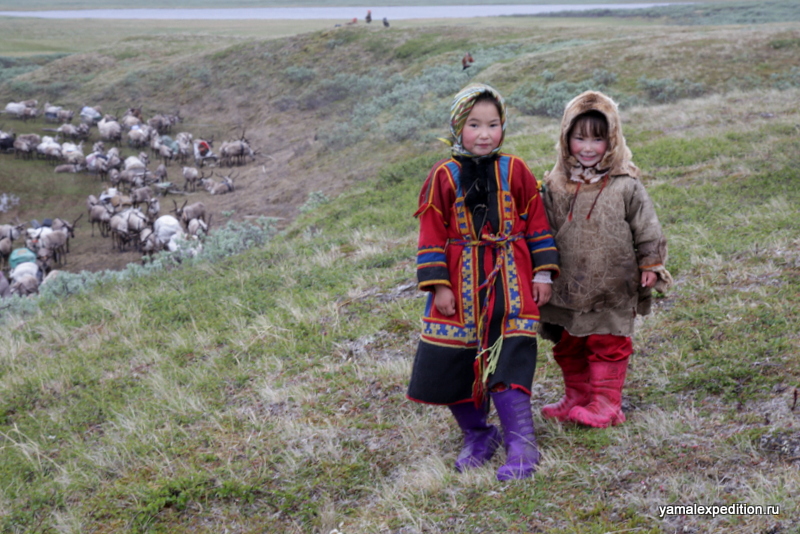
Pyhyn-Syo river crossing:


Argishes while waiting to cross the river:
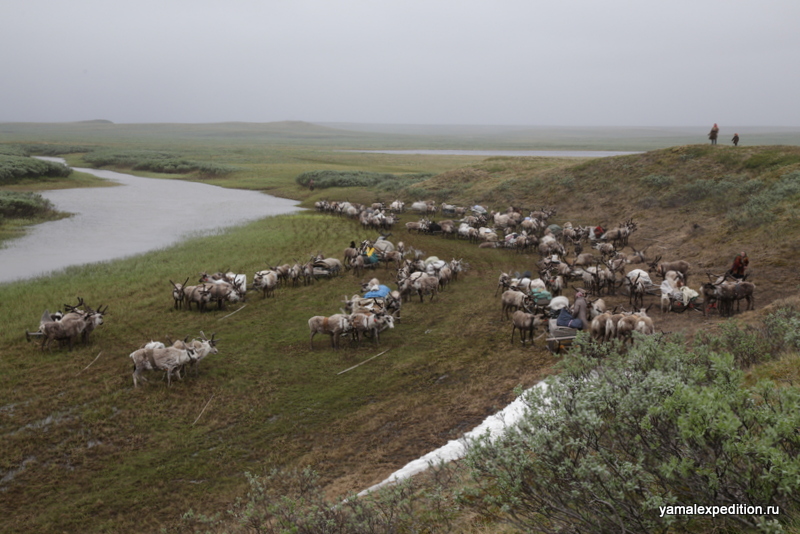
Alexander during river crossing:
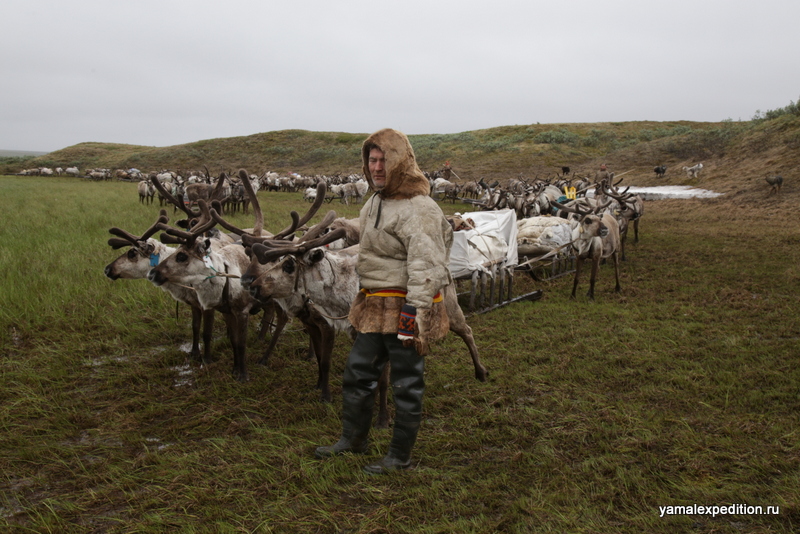
Kostya is leading his argish to the river:
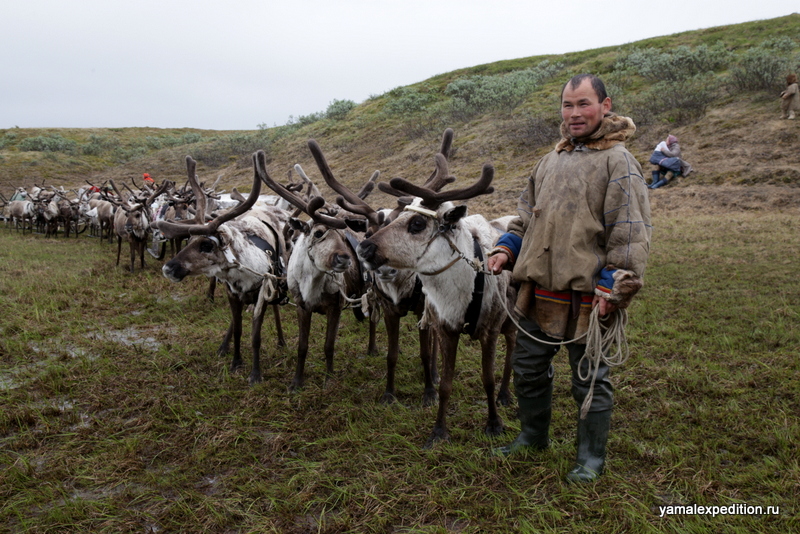
Semyon and Nikita are watching the river crossing:
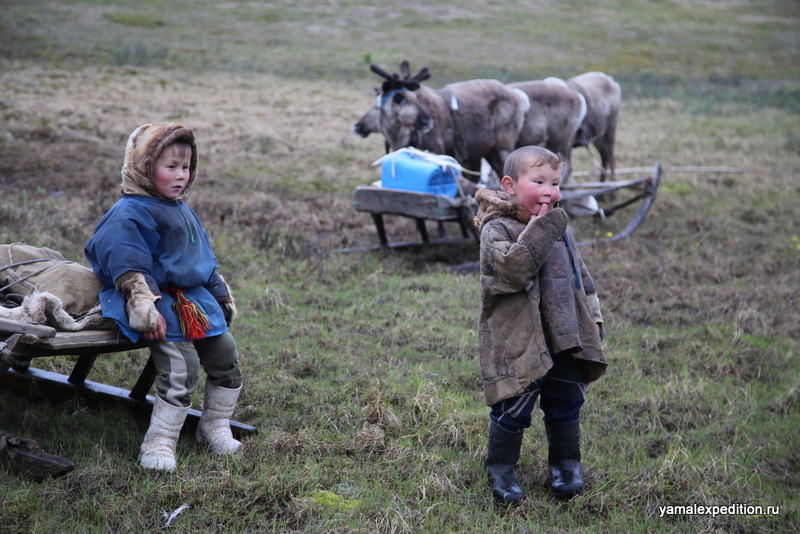
Kostya' neba (Kostya Hudi's mother) with her argish:
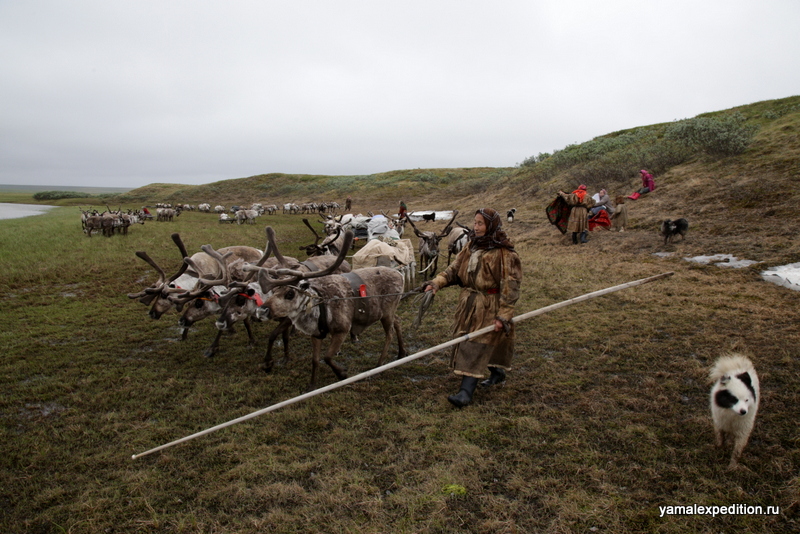
Olya is taking down Pedava from Albina's narta before the river crossing:
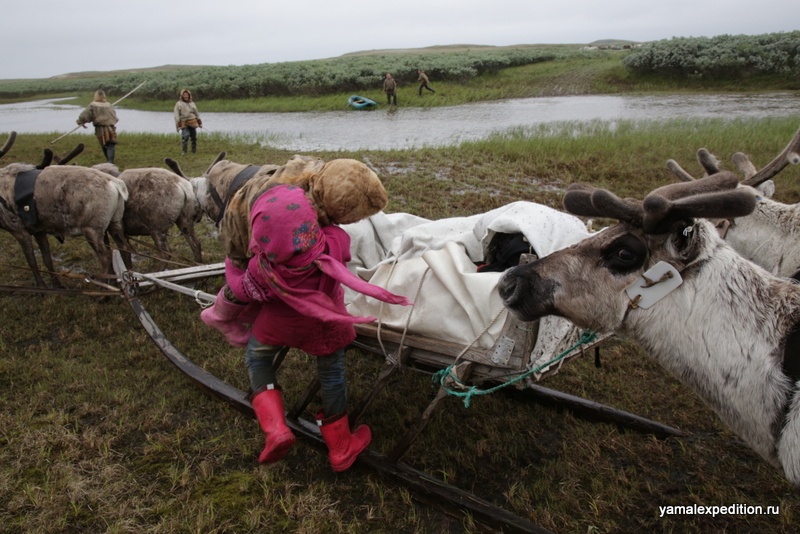
On June 30th we arrived at our 26th encampment: N 70º05'18,2'' E 068º29'37,1''. Linear distance - 2,7 km.
On this stop men experiences a phenomena called "mammoth fever". To find a mammoth tusk in Yamal peninsula isn't a rare occasion. One can easily find an announcement on a wall in Salekhard saying that one is ready to sell/buy a mammoth tusk. A tundra inhabitants often finds those tusks, and sometimes of a very good quality. The tusks become an object of trade and social prestige: one make of them some items of high social status, foe example knife hose or detals of harnessry. In older times Nenets believed that tusks are the horns of yangor (earth reindeer). Yangor is believed to be a racing aminal of Sihirtya - people who inhabited these areas before Nenets and who vanished then under earth.
One of the lakes close to our 26th encampment (we decided not to tell its name) is known as a place when one often finds mammoth tusks. In the middle of 2000-ies the lake's water reeled back sufficiently and on the opened banks one lucky man found 9 tusks an once.
Some men from our encampment, who places fishnets at the lake, tried to find a mammoth tusks for several days, but without success - when we arrived here previousely opened banks were already covered with grass. Althou one have found finally a fragment a of a tusk and several pieces of leg bones of a mammoth. Ironically this day we've got a call from another family which is staying close to Yuribey no - they told us about a women who had found the tusk there.
The «Mammoth lake":
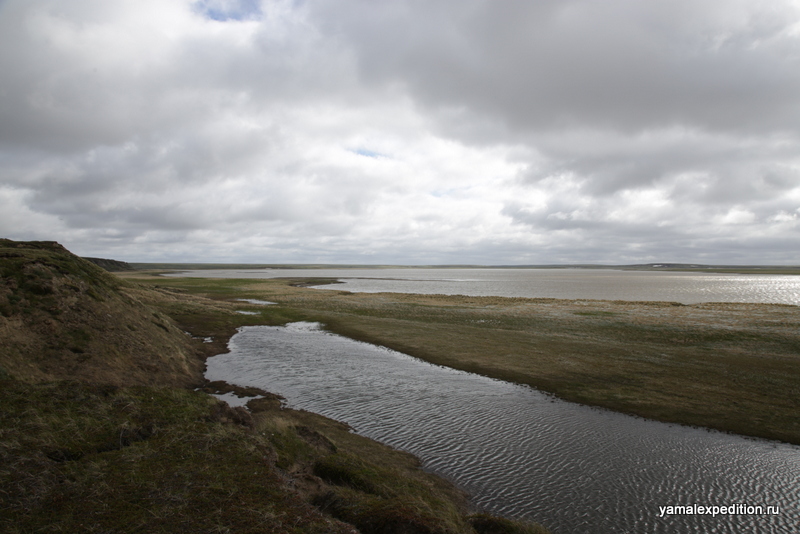
Yaroslav and Myangcha near the "Mammoth lake":
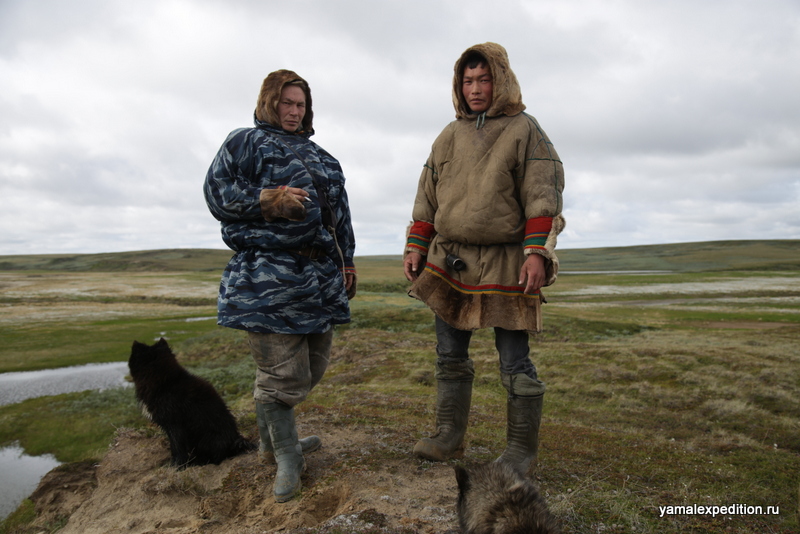
See ice on the boots? It's an evening frost in July!
